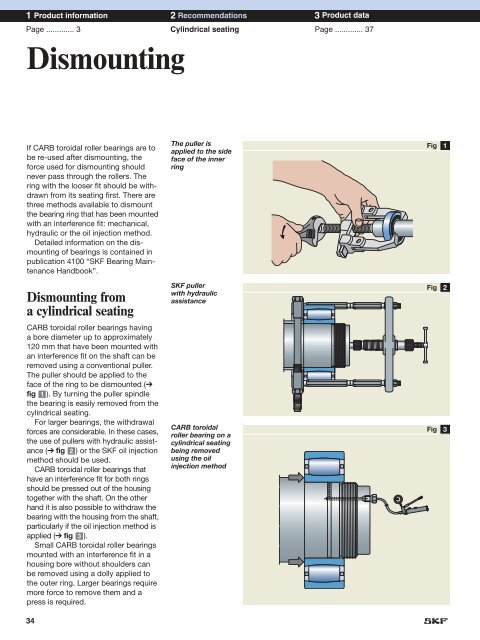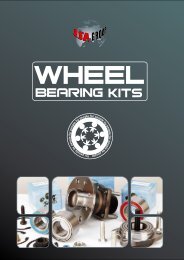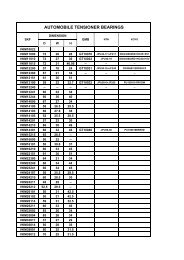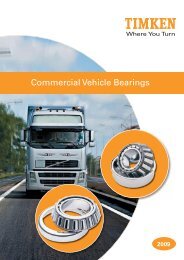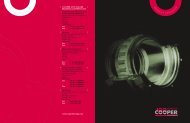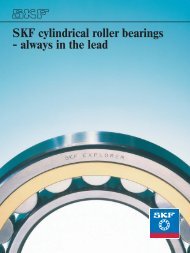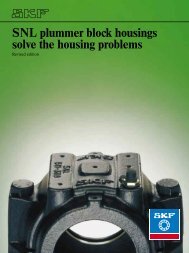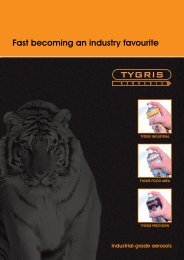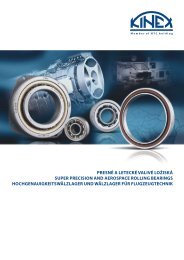CARB® toroidal roller bearings â a revolutionary ... - Acorn Bearings
CARB® toroidal roller bearings â a revolutionary ... - Acorn Bearings
CARB® toroidal roller bearings â a revolutionary ... - Acorn Bearings
Create successful ePaper yourself
Turn your PDF publications into a flip-book with our unique Google optimized e-Paper software.
1 Product information 2 Recommendations 3 Product data<br />
Page ............. 3 Cylindrical seating Page ............. 37<br />
Dismounting<br />
If CARB <strong>toroidal</strong> <strong>roller</strong> <strong>bearings</strong> are to<br />
be re-used after dismounting, the<br />
force used for dismounting should<br />
never pass through the <strong>roller</strong>s. The<br />
ring with the looser fit should be withdrawn<br />
from its seating first. There are<br />
three methods available to dismount<br />
the bearing ring that has been mounted<br />
with an interference fit: mechanical,<br />
hydraulic or the oil injection method.<br />
Detailed information on the dismounting<br />
of <strong>bearings</strong> is contained in<br />
publication 4100 “SKF Bearing Maintenance<br />
Handbook”.<br />
The puller is<br />
applied to the side<br />
face of the inner<br />
ring<br />
Fig<br />
1<br />
Dismounting from<br />
a cylindrical seating<br />
SKF puller<br />
with hydraulic<br />
assistance<br />
Fig<br />
2<br />
CARB <strong>toroidal</strong> <strong>roller</strong> <strong>bearings</strong> having<br />
a bore diameter up to approximately<br />
120 mm that have been mounted with<br />
an interference fit on the shaft can be<br />
removed using a conventional puller.<br />
The puller should be applied to the<br />
face of the ring to be dismounted (➔<br />
fig 1 ). By turning the puller spindle<br />
the bearing is easily removed from the<br />
cylindrical seating.<br />
For larger <strong>bearings</strong>, the withdrawal<br />
forces are considerable. In these cases,<br />
the use of pullers with hydraulic assistance<br />
(➔ fig 2 ) or the SKF oil injection<br />
method should be used.<br />
CARB <strong>toroidal</strong> <strong>roller</strong> <strong>bearings</strong> that<br />
have an interference fit for both rings<br />
should be pressed out of the housing<br />
together with the shaft. On the other<br />
hand it is also possible to withdraw the<br />
bearing with the housing from the shaft,<br />
particularly if the oil injection method is<br />
applied (➔ fig 3 ).<br />
Small CARB <strong>toroidal</strong> <strong>roller</strong> <strong>bearings</strong><br />
mounted with an interference fit in a<br />
housing bore without shoulders can<br />
be removed using a dolly applied to<br />
the outer ring. Larger <strong>bearings</strong> require<br />
more force to remove them and a<br />
press is required.<br />
CARB <strong>toroidal</strong><br />
<strong>roller</strong> bearing on a<br />
cylindrical seating<br />
being removed<br />
using the oil<br />
injection method<br />
Fig<br />
3<br />
34


